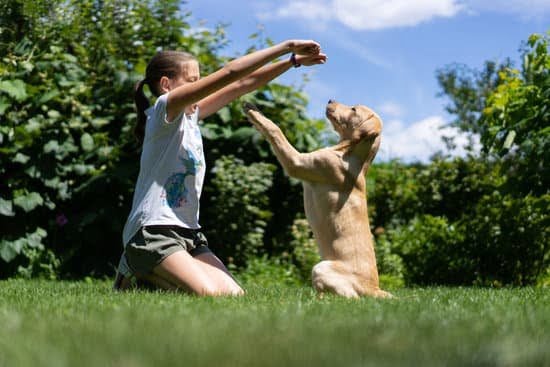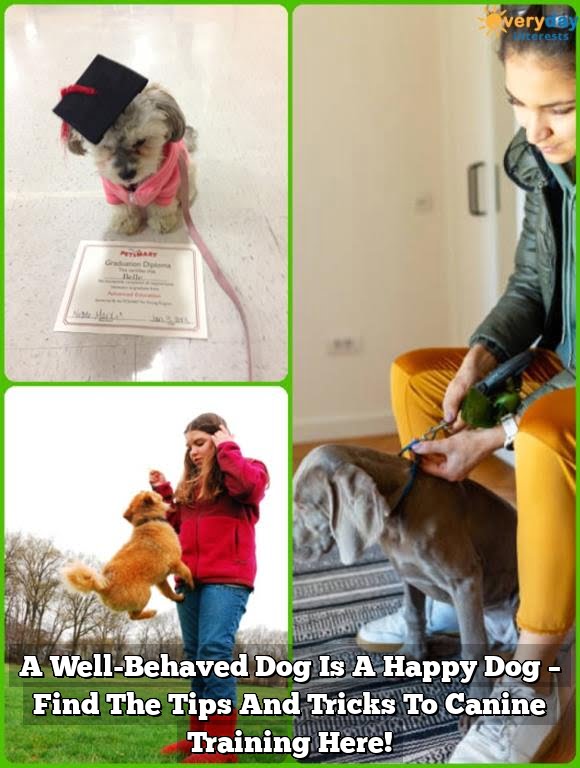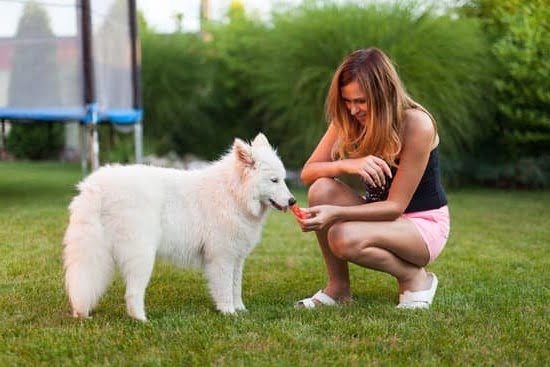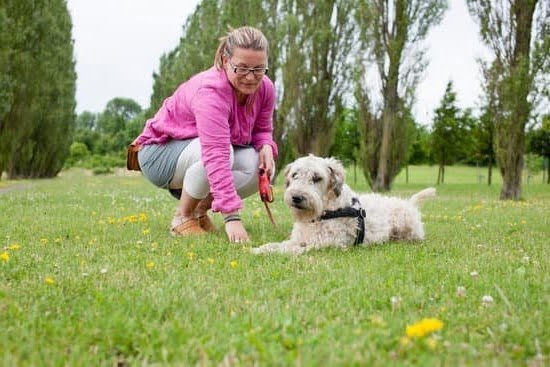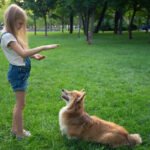Introduction
Training a dog to find is both a fun and rewarding task. The purpose of training a dog to find is essentially to teach the animal how to locate items by scent. This type of skill can be beneficial for practical applications such as search and rescue or tracking lost animals or persons, but it can also be used to simply create an enjoyable activity that you and your canine partner can do together. Training a dog to find requires patience, consistency, and repetition in order to build on the knowledge that has been previously taught. Implementing these techniques will help you become successful in training your pup.
Benefits:
Training your dog in finding objects can provide many benefits beyond the practical applications mentioned earlier. Teaching simple phrases like ‘find’, ‘look’ or ‘search’ when combined with positive reinforcement and consistent repetition will help reinforce the desired behavior in your puppy which will eventually translate into more complex commands involving finding things. In addition, teaching them this type of skill not only strengthens their understanding of verbal commands but also gives them great mental stimulation which is essential for them being content and well-behaved dogs. Overall, it provides both you and your playful companion with an enjoyable bonding experience that goes beyond basic obedience training.
Preparing Fido for the Task
The first step in training a dog to find objects is establishing a clear set of guidelines. This means deciding on the exact behavior that will be rewarded, as well as what consequences your pup should expect if they don’t follow the rules. It also helps to choose an appropriate reward for completing the task correctly. Rewards like treats, praise, and play can help keep Fido motivated and encourage them to practice more often.
Once the groundwork has been laid out, you can begin training your pup by teaching them basic commands like sit and stay. These commands should form the foundation for their training routine and will help give you better control over Fido during their search sessions. You should also spend time familiarizing your pup with the area in which they will be looking (indoors or outdoors). As they become used to their search space, you can start introducing distractions like toys or balls to keep them engaged during their practice sessions.
When it comes time to actually teach your dog how to find items, start off slow by having them locate objects from only a few feet away at first. As Fido begins to gain confidence in their skills, you can increase the distance between them and the object or add more of an element of surprise by starting each session without showing Fido what they will be finding. While practicing with your pup it’s important to reward successes quickly and consistently- this helps reinforce proper behaviors and ensures that Fido associates searching with something positive (as opposed to a tedious chore). With enough practice, patience and guidance from you- there’s no doubt that your pup can learn how to find any number of items!
Getting Started
When it comes to teaching a dog how to find an item, it’s important to break the process down into small, manageable steps. First, you need to familiarize your dog with the items that you will be asking them to locate. Begin by showing your dog the object(s) you want them to search for—depending on the object, consider introducing it in different environments or across multiple rooms in order for your pup to get accustomed to how it looks and smells from various angles. Then, slowly start introducing a reward system. Start by praising your pooch for just being near the item, or eventually touching and carrying it with their mouths. Rewards should come frequently during this stage of training—treats and toys should be used as incentives here (keep in mind that food rewards during this part of training can easily backfire).
Once your dog is comfortable with recognizing and retrieving the items you have presented them with, you can start working on finding items more dynamically. This includes practicing commands like “find” or “hunt” while giving directions as far as where they should look – such as under furniture or behind doors – so they can begin following more complex instructions outside of being specifically cued to pick up a particular item. If successful throughout this phase, lengthen out distances between yourself and your pup when cueing them what to retrieve – having them follow commands over longer distances shows an even greater level of coordination. Additionally, gradually increase complexity (i.e., ask the pup to find one item from a set of two or three) until you start seeing consistent accuracy from them in identifying whatever requests are made
Using the Right Approach
When training a dog to find, it is important to use the right approach. Visual and audio cues can be used effectively as a part of the training routine. It is helpful to provide verbal praise and loving rewards for successful finding experiences so that your dog learns to associate these positive outcomes with your commands. Additionally, repeating the same commands during different moments of the training session can help reinforce understanding and obedience in your canine pal. When teaching your pup how to search an area, start off by selecting an easy hiding spot in an open area with minimal distractions. Directing your pup through verbal commands such as “seek” or “find”, demonstrate what you expect from them while providing clear visual objects that guide their movements towards the hiding spot. Once they are able to successfully locate the object, have them remain focused on it by addressing them again with simple commands such as ‘stay’ or ‘look’. Once their commitment pays off, be sure to offer abundant rewards in order for them to recognize the success and begin connecting their actions with pleasing consequences. As you progress, move onto more challenging areas or ask for extended times regarding focus control.
Tips and Techniques
When training your dog to find, it is important to start with small steps and ensure that you maximize success. Give your dog ample opportunity to practice and reinforce the behavior so they become familiar with the process.
Begin by teaching them a verbal cue or command, such as “find” or “which one?” Start indoors in an area without distractions and have something you know your dog loves, like pieces of their kibble or a favorite toy. Hide the treats or toy and encourage them to seek it out. When they do so successfully, be sure to reward them with lavish praise and treat rewards. You can gradually increase the complexity of these indoor games as your pup grows more comfortable with the idea of searching for something they cannot see but can scent out. Games like hide-and-seek can also help motivate your pup!
Once you feel that you have committed the behavior indoors, move outdoors into an environment with more distractions. Practice search games in different areas throughout different times of day so that your pup learns how environmental factors such as temperature, wind direction, and terrain will affect their ability to correctly identify scents. This can then transfer over easily if you decide on enrolling them into detection competition sports such as AKC Scent Work or APDT Nosework activities where the environment is ever changing!
Problem-Solving
Problem-solving can help you train your dog to find something. It requires patience and some trial and error. Here are a few steps to take when training your dog to problem-solve:
1. First, identify the training goal. When teaching your dog how to find an object or person, it is important to create clear expectations for them ahead of time. Talk to your dog about what you expect and give detailed instructions on how you would like the exercise done.
2. Secondly, explain the process and demonstrate it yourself if needed. Practice makes perfect when it comes to problem solving with dogs! Spend time going through the exercise step-by-step so that your dog understand exactly what they’re supposed to do when they are looking for something. Showing them exactly what it is you need them to do will help set a clear expectation of success in their minds.
3. Thirdly, reward successes along the way and make sure that failure doesn’t feel too harsh or punishing in any way. When they succeed, reward them with treats and praise so that they become encouraged and motivated as they learn how to problem solve better! Conversely, if problems arise during the exercise ensure that failure isn’t too harsh (such as by avoiding physical punishment) which may lead your pup feeling fearful or discouraged about trying again next time.
4. Finally, gradually add more complexity over time as needed until both you and your pup feel confident about their skillset around finding things! Start slowly with easier exercises then eventually introduce harder elements like longer distances or bigger objects until both of you are confident in their abilities! This way, each success builds upon itself before introducing any new challenges which creates a better learning environment for everyone involved!
Conclusion
After putting in the time and effort to train your dog to find, the results will be worth it! You should take time out of your busy schedule to praise and reward your dog when they do find something. This can include a treat, a long belly rub, or their favorite toy. By rewarding them every time they succeed, you are reinforcing the behavior in your pup. After all of your hard work training is over and done, you may decide to certify your pup so that you both can reap even more rewards. Certifications can include canine sporting or search-and-rescue awards; this oftentimes adds an extra layer of recognition for both of you. Finally, give yourself a pat on the back for successfully training such a seemingly difficult skill. Your continued commitment shows how much you care about deepening your bond with your pup to help make their life as fulfilling as possible.

Welcome to the blog! I am a professional dog trainer and have been working with dogs for many years. In this blog, I will be discussing various topics related to dog training, including tips, tricks, and advice. I hope you find this information helpful and informative. Thanks for reading!

